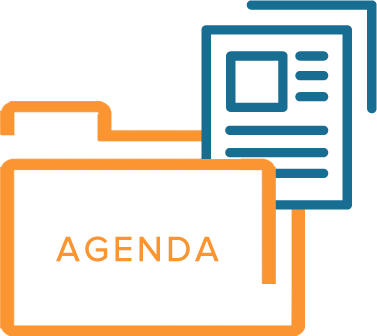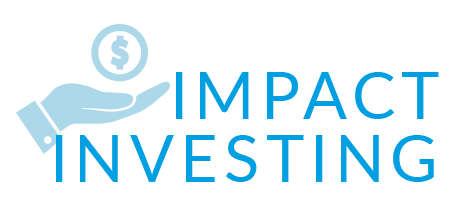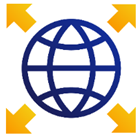

Press Release: DFC Approves $ 3.6 Billion of New Investments in Global Development in Largest Quarter Ever

Press Release: DFC Approves $ 3.6 Billion of New Investments in Global Development in Largest Quarter Ever
Publication | Update:
Sep 2020

The U.S. International Development Finance Corporation (DFC) Board of Directors has approved investments this quarter totaling more than $ 2.5 billion across nine projects that will advance development in Africa, Latin America, and emerging markets across the globe. An additional 30 investments totaling more than $ 1 billion were approved by the agency since its last quarterly Board meeting in June, bringing total investments approved over the quarter to more than $ 3.6 billion.
“The investments approved today mark the culmination of an exceptionally impactful quarter,” said DFC Chief Executive Officer Adam Boehler. “DFC’s work over the past three months will unlock billions of dollars in some of the world’s most impoverished countries. These projects will help stabilize communities across the world and prepare them to thrive in the years ahead. I am extremely proud of the DFC team and grateful to our agency’s many partners for their continued leadership in the face of the pandemic.”
Today’s Board meeting included the approval of two transactions totaling $ 1.7 billion that will help transform Mozambique, one of the poorest countries in the world. Several investments will also channel desperately needed capital into the hands of small business owners and other underserved borrowers in the wake of COVID-19, including in several markets across the Western Hemisphere that have been severely impacted by the pandemic.
The past quarter saw DFC continue to bring its investment tools to tackle complex development challenges, including through the first transactions structured by DFC’s Mission Transaction Unit—composed of staff from the United States Agency for International Development (USAID)’s former Development Credit Authority—which will bring needed capital to fragile states in Africa’s Sahel region. Other investments approved advance DFC’s foreign policy mandate, from strengthening energy security in Ukraine by facilitating increased energy imports from the United States to supporting investments in critical minerals.
Many of the approved investments advance DFC’s 2X Women’s Initiative and the Administration’s broader Women’s Global Development and Prosperity Initiative (W-GDP). The investments also support the agency’s Portfolio for Impact and Innovation (PI2), Health and Prosperity Initiative, and Connect Africa initiative as well as the Administration’s Prosper Africa and América Crece initiatives.
More than 60 percent of investments approved by DFC this quarter are in low- and lower middle-income countries.
Read Boehler’s report to the Board.
Investments approved by the Board include:
- Catalyzing development through energy production in Mozambique: Up to $ 1.5 billion in political risk insurance will support the commercialization of natural gas reserves in Mozambique’s Rovuma Basin—a project with the potential to transform the country into a major energy exporter. When complete, the project is expected to increase Mozambique’s GDP by an average of $ 15 billion per year, positioning one of the world’s poorest countries to achieve lasting, long-term economic growth. The project will advance development across Mozambique, with significant associated GDP benefits expected to accrue to sectors beyond oil and gas. DFC’s political risk insurance will support the development, construction, and operation of an onshore liquefaction plant, along with supporting facilities.
- Building power infrastructure in Mozambique: An up to $ 200 million loan to Central Térmica de Temane will finance the development, construction, and operation of a 420-megawatt power plant and 25-kilometer interconnection line in Mozambique. Power will leave the plant through a 560-kilometer transmission line that was supported with technical assistance from the U.S. Government-led Power Africa initiative. The plant will diversify the country’s energy mix, reduce the cost of electricity, and utilize the domestic gas supply to increase power generation in a country that faces one of the lowest electrification rates globally. It will also advance the Government of Mozambique’s plans for development of the national electricity system.
- Leveraging mobile technology to deliver essential goods in Kenya: $ 5 million in equity will help Copia Global grow its mobile commerce platform and logistics network, which delivers essential goods like food, personal care products, and school supplies to low- and middle-income consumers in rural and peri-urban areas of Kenya. Copia’s business model is designed to reach underserved communities including women and individuals earning less than $ 10 per day, with approximately 70 percent of customers employed by small businesses or farms.
- Advancing energy independence in Ukraine: $ 62 million in additional political risk insurance will support the expansion of Energy Resources of Ukraine (ERU) Trading, which currently imports, stores, and sells approximately 10 percent of Ukraine’s total annual gas needs. The project will advance energy independence in Ukraine by diversifying gas imports and reducing reliance on Russia.
- Promoting financial market stability across Africa: An up to $ 250 million tier-2 capital loan will further strengthen Africa Finance Corporation (AFC), enabling it to continue serving new and existing borrowers across the continent as a low-cost source of financing in the wake of COVID-19. With DFC’s support, the majority private sector-owned, African-led development finance institution will continue to prioritize debt and equity investments in critical infrastructure projects, including energy, telecommunications, and transportation.
- Boosting small businesses in Mexico: An up to $ 100 million loan to Crédito Real will support loans to small and medium enterprises (SMEs) in Mexico, with a focus on reaching businesses owned or led by women. The project will address a significant credit gap faced by small businesses in Mexico, where, even before the severe economic contraction from COVID-19, only an estimated 15 percent of SMEs’ financing needs were met.
- Empowering women in Rwanda and Kenya through digital access to health products: $ 1 million in equity will help Kasha expand its e-commerce platform, delivering critical health and personal care products—including personal protective equipment—to women and girls across Rwanda and Kenya. Enabling greater access to personal care products will also reduce school absences for girls, enabling them to improve their education. Kasha’s mobile platform is accessible with or without internet or a smartphone, selling products directly to low- and middle-income women in both rural and urban locations. The project, which marks the first DFC investment to meet all of the 2X Criteria, is also expected to create over 350 formal jobs, of which 90 percent are expected to be filled by women.
- Advancing financial inclusion in Colombia: An up to $ 250 million tier-2 capital loan to Banco Davivienda will improve the availability of small business and low-income housing loans in Colombia, where limited access to finance remains a major obstacle to economic growth and has only been exacerbated by COVID-19. The bank will prioritize loans to women and women-owned SMEs.
- Supporting economic recovery in Costa Rica: An up to $ 150 million loan will enable BAC San José to expand lending to underserved borrowers in Costa Rica, dedicating at least half of loan proceeds to women and 30 percent to SMEs. DFC’s financing will inject desperately needed liquidity into Costa Rica following a severe outbreak of COVID-19 that has led to widespread and prolonged restrictions to economic activity.
Additional projects approved by DFC since its last quarterly Board meeting include:
- Accelerating pandemic recovery in Brazil: A $ 400 million loan to Banco Itaú will support lending to SMEs following a severe outbreak of COVID-19 in Brazil, with a focus on reaching women and the most underdeveloped states in the country. DFC’s financing was approved under its COVID-19 Rapid Response Liquidity Facility.
- Uplifting refugee communities around the world: A $ 20 million loan will help the Kiva Refugee Investment Fund provide microloans to refugees across the globe, addressing a major barrier for individuals whose perceived risk often prevents them from accessing finance.
- Fostering stability through credit access in fragile states in West Africa: A $ 14.75 million loan portfolio guaranty to Stitching Cordaid will support financing for SMEs and microfinance institutions that are creating economic opportunity and building more prosperous communities in Burkina Faso, Sierra Leone, Guinea, and Mali. The transaction uses a blended finance model, including first-loss capital to be provided by USAID’s West Africa Trade and Investment Hub.
- Preparing smallholder farmers for severe weather globally: A $ 37.5 million loan will help the InsuResilience Investment Fund expand further access around the world to insurance against extreme weather and other natural disasters that impact crop yields, most notably for smallholder farmers.
- Incentivizing loans to women in Costa Rica: A $ 15 million loan to Banco Improsa will enable loans to SMEs in Costa Rica, with an interest rate structure that incentivizes the bank to lend to businesses owned or led by women.
- Delivering critical services to underserved communities across the world: A $ 15 million loan to Global Partnerships will deliver life-changing products and services such as microfinance, healthcare, and technology in mostly low-income and lower middle-income countries in Africa, Latin America, and the Caribbean, with a focus on reaching women.
- Strengthening the agricultural value chain in India: A $ 20 million loan will help Samunnati expand financing and technical assistance to low-income farmers and enterprises throughout the agricultural value chain in India so that they can increase productivity, enhance their earnings, and reach new markets.
- Helping the world’s small businesses rebound from COVID-19: A $ 45 million loan will support a debt fund focused on helping MSMEs in mostly low- and lower middle-income countries weather the challenges of COVID-19.
- Supporting microenterprises with mobile money in Kenya: A $ 2.9 million loan guaranty will help 4G Capital provide affordable microloans that are disbursed to and repaid by entrepreneurs and small businesses in Kenya through a mobile banking platform.
- Bolstering economic growth in an underdeveloped region of Brazil through investment in critical minerals: A $ 25 million investment will enable TechMet Limited to boost the production capacity of a cobalt and nickel mine in Piauí, Brazil, creating jobs in one of the most underdeveloped states in the country while advancing high U.S. standards.
- Developing Vietnam’s aquaculture industry: An $ 11 million loan will enable Australis Aquaculture to expand an open-water fish farm in Vietnam—introducing new technologies, helping the country diversify its economy, and creating an expected 400 local jobs.
- Investing in the world’s women through the pandemic: A $ 20 million loan will help SEAF COVID-19 Global Gender Lens Emergency Loan Finance LLC deliver critical financing to SMEs around the world that are owned or led by women, who often bear the disproportionate impacts of crises like COVID-19. The majority of funds are expected to support borrowers in low- and lower middle-income countries around the world.
- Increasing power generation capacity in India: A $ 53.5 million loan to ReNew Power will support the development, construction, and operation of a 105-megawatt solar power plant in Gujarat, India.
- Providing affordable homes in El Salvador: A $ 10 million loan will help La Hipotecaria provide affordable mortgages in El Salvador following the outbreak of COVID-19, which has only exacerbated the housing gap faced by low-income communities around the world.
- Supplying critical agricultural inputs in Zambia: $ 32 million in political risk insurance will support the expansion of Zambia Seed Company, which produces seeds that it distributes to smallholder farmers in Zambia and across Sub-Saharan Africa.
- Addressing a finance gap across Latin America: A $ 20 million loan to Locfund Next will extend scarce local currency financing, combined with technical assistance, to microfinance institutions that serve underbanked communities across Latin America.
- Empowering the diaspora community in Bosnia and Herzegovina: A $ 5.18 million loan portfolio guaranty will support lending from ProCredit Bank to MSMEs owned by family of the Bosnian diaspora or members of the Bosnian diaspora who have recently returned to the country. These groups face major barriers in accessing finance due to limited collateral and documentation.
- Bridging the credit gap in Mexico: A $ 14 million loan guaranty will enable Banco Compartamos to expand microlending in Mexico, especially to women, who represent almost 90 percent of the bank’s current microfinance portfolio.
- Financing rooftop solar for SMEs in India: With the support of USAID’s India Mission, a $ 12.5 million loan portfolio guaranty will help finance investments by Indian SMEs in renewable energy solutions, including rooftop solar installations, enabling businesses to access reliable power and cut costs.
- Advancing fintech solutions in rural Colombia: A $ 9.75 million loan guaranty will enable Finsocial to expand its digital lending platform, which serves teachers and pensioners with otherwise limited access to finance in rural and low-income areas of Colombia.
- Bolstering farming output in Namibia: $ 36 million in political risk insurance will help Achill Island Investments grow its table grape farm in Namibia, creating jobs and stimulating the local economy.
- Injecting critical liquidity into India’s energy sector: A $ 75 million loan to ReNew Power will address liquidity needs resulting from COVID-19, enabling shovel-ready energy projects to move forward across India.
- Meeting the financing needs of rural populations in Ecuador: A $ 9.75 million loan guaranty will enable Cooperativa de Ahorro y Crédito Jardín Azuayo to expand financing in rural areas of southern Ecuador, with a focus on reaching those owned or led by women.
- Promoting financial inclusion in Cambodia: A $ 50 million loan to Hattha Kaksekar Limited (HKL) will expand microlending to women and MSMEs in Cambodia, especially in rural areas of the country.
- Boosting growing businesses in Mexico: A $ 45 million loan will help Mexarrend extend lease financing to SMEs in Mexico, enabling businesses in the healthcare, consumer, and manufacturing sectors to acquire assets that accelerate growth and productivity.
- Spurring economic activity in Ukraine: A $ 27 million loan will support the construction and operation of a Sheraton hotel in Kyiv, Ukraine that will create jobs, build local supply chains, and encourage trade, investment, and economic growth.
- Serving the underbanked in El Salvador: A $ 9.75 million loan guaranty will help Sociedad de Ahorro y Crédito Apoyo Integral expand mortgage loans and other credit solutions to low-income individuals in El Salvador, mostly in rural areas of the country.
- Channeling capital to highly impactful ventures in India: A $ 15 million loan to Sabre Partners Fund and $ 10 million co-investment arrangement will finance investments in SMEs that are introducing innovative solutions in highly impactful sectors such as healthcare, financial services, and technology across India.
- Generating solar power in Costa Rica: A $ 15 million loan will help GoSolar develop, install, and finance rooftop solar systems that will deliver affordable power to homeowners and businesses in Costa Rica.
- Expanding women’s access to microfinance in India: A $ 14.625 million loan guaranty will enable Asirvad to expand its microfinance portfolio to rural, low-income women across India.
Many of these investments are subject to Congressional Notification.
Photo courtesy of Bill Oxford.


NextBillion is an open forum for the development through enterprise sector. Based at the William Davidson Institute at the University of Michigan, the site is a community of business leaders, social entrepreneurs, NGO managers, policy makers, academics and others exploring the connection between development and for-profit business. https://nextbillion.net
Delivery Format:
HTML
Immediate Delivery
 Access Rights | Content Availability:
Access Rights | Content Availability: 

The content of this subscriber knowledge library area, the technology platform and tools are provided for information purposes only. No legal liability or other responsibility is accepted for any errors, omissions, or any loss, damage or inconvenience caused as a result of reliance on such information, or statements on this site, or any site to which these pages connect, since we cannot control the content or take responsibility for pages maintained by external providers. Where we provide links to sites, we do not by doing so endorse any information or opinions appearing in them. This courseware includes resources copyrighted and open educational resources (OER) by multiple individuals and organizations. If someone else is given access to your account login information, that person has read, understands and accepts the Conditions of Use for this platform.

Objectives and Study Scope
This study has assimilated knowledge and insight from business and subject-matter experts, and from a broad spectrum of market initiatives. Building on this research, the objectives of this market research report is to provide actionable intelligence on opportunities alongside the market size of various segments, as well as fact-based information on key factors influencing the market- growth drivers, industry-specific challenges and other critical issues in terms of detailed analysis and impact.
The report in its entirety provides a comprehensive overview of the current global condition, as well as notable opportunities and challenges.
The analysis reflects market size, latest trends, growth drivers, threats, opportunities, as well as key market segments. The study addresses market dynamics in several geographic segments along with market analysis for the current market environment and future scenario over the forecast period.
The report also segments the market into various categories based on the product, end user, application, type, and region.
The report also studies various growth drivers and restraints impacting the market, plus a comprehensive market and vendor landscape in addition to a SWOT analysis of the key players.
This analysis also examines the competitive landscape within each market. Market factors are assessed by examining barriers to entry and market opportunities. Strategies adopted by key players including recent developments, new product launches, merger and acquisitions, and other insightful updates are provided.
Research Process & Methodology

We leverage extensive primary research, our contact database, knowledge of companies and industry relationships, patent and academic journal searches, and Institutes and University associate links to frame a strong visibility in the markets and technologies we cover.
We draw on available data sources and methods to profile developments. We use computerised data mining methods and analytical techniques, including cluster and regression modelling, to identify patterns from publicly available online information on enterprise web sites.
Historical, qualitative and quantitative information is obtained principally from confidential and proprietary sources, professional network, annual reports, investor relationship presentations, and expert interviews, about key factors, such as recent trends in industry performance and identify factors underlying those trends - drivers, restraints, opportunities, and challenges influencing the growth of the market, for both, the supply and demand sides.
In addition to our own desk research, various secondary sources, such as Hoovers, Dun & Bradstreet, Bloomberg BusinessWeek, Statista, are referred to identify key players in the industry, supply chain and market size, percentage shares, splits, and breakdowns into segments and subsegments with respect to individual growth trends, prospects, and contribution to the total market.
Research Portfolio Sources:
Global Business Reviews, Research Papers, Commentary & Strategy Reports
M&A and Risk Management | Regulation

The future outlook “forecast” is based on a set of statistical methods such as regression analysis, industry specific drivers as well as analyst evaluations, as well as analysis of the trends that influence economic outcomes and business decision making.
The Global Economic Model is covering the political environment, the macroeconomic environment, market opportunities, policy towards free enterprise and competition, policy towards foreign investment, foreign trade and exchange controls, taxes,
financing, the labour market and infrastructure.
We aim update our market forecast to include the latest market developments and trends.
Review of independent forecasts for the main macroeconomic variables by the following organizations provide a holistic overview of the range of alternative opinions:
As a result, the reported forecasts derive from different forecasters and may not represent the view of any one forecaster over the whole of the forecast period. These projections provide an indication of what is, in our view most likely to happen, not what it will definitely happen.
Short- and medium-term forecasts are based on a “demand-side” forecasting framework, under the assumption that supply adjusts to meet demand either directly through changes in output or through the depletion of inventories.
Long-term projections rely on a supply-side framework, in which output is determined by the availability of labour and capital equipment and the growth in productivity.
Long-term growth prospects, are impacted by factors including the workforce capabilities, the openness of the economy to trade, the legal framework, fiscal policy, the degree of government regulation.
Direct contribution to GDP
The method for calculating the direct contribution of an industry to GDP, is to measure its ‘gross value added’ (GVA); that is, to calculate the difference between the industry’s total pretax revenue and its total boughtin costs (costs excluding wages and salaries).
Forecasts of GDP growth: GDP = CN+IN+GS+NEX
GDP growth estimates take into account:

Market Quantification
All relevant markets are quantified utilizing revenue figures for the forecast period. The Compound Annual Growth Rate (CAGR) within each segment is used to measure growth and to extrapolate data when figures are not publicly available.
Revenues
Our market segments reflect major categories and subcategories of the global market, followed by an analysis of statistical data covering national spending and international trade relations and patterns. Market values reflect revenues paid by the final customer / end user to vendors and service providers either directly or through distribution channels, excluding VAT. Local currencies are converted to USD using the yearly average exchange rates of local currencies to the USD for the respective year as provided by the IMF World Economic Outlook Database.
Industry Life Cycle Market Phase
Market phase is determined using factors in the Industry Life Cycle model. The adapted market phase definitions are as follows:

The Global Economic Model
The Global Economic Model brings together macroeconomic and sectoral forecasts for quantifying the key relationships.
The model is a hybrid statistical model that uses macroeconomic variables and inter-industry linkages to forecast sectoral output. The model is used to forecast not just output, but prices, wages, employment and investment. The principal variables driving the industry model are the components of final demand, which directly or indirectly determine the demand facing each industry. However, other macroeconomic assumptions — in particular exchange rates, as well as world commodity prices — also enter into the equation, as well as other industry specific factors that have been or are expected to impact.
Forecasts of GDP growth per capita based on these factors can then be combined with demographic projections to give forecasts for overall GDP growth.
Wherever possible, publicly available data from official sources are used for the latest available year. Qualitative indicators are normalised (on the basis of: Normalised x = (x - Min(x)) / (Max(x) - Min(x)) where Min(x) and Max(x) are, the lowest and highest values for any given indicator respectively) and then aggregated across categories to enable an overall comparison. The normalised value is then transformed into a positive number on a scale of 0 to 100. The weighting assigned to each indicator can be changed to reflect different assumptions about their relative importance.

The principal explanatory variable in each industry’s output equation is the Total Demand variable, encompassing exogenous macroeconomic assumptions, consumer spending and investment, and intermediate demand for goods and services by sectors of the economy for use as inputs in the production of their own goods and services.
Elasticities
Elasticity measures the response of one economic variable to a change in another economic variable, whether the good or service is demanded as an input into a final product or whether it is the final product, and provides insight into the proportional impact of different economic actions and policy decisions.
Demand elasticities measure the change in the quantity demanded of a particular good or service as a result of changes to other economic variables, such as its own price, the price of competing or complementary goods and services, income levels, taxes.
Demand elasticities can be influenced by several factors. Each of these factors, along with the specific characteristics of the product, will interact to determine its overall responsiveness of demand to changes in prices and incomes.
The individual characteristics of a good or service will have an impact, but there are also a number of general factors that will typically affect the sensitivity of demand, such as the availability of substitutes, whereby the elasticity is typically higher the greater the number of available substitutes, as consumers can easily switch between different products.
The degree of necessity. Luxury products and habit forming ones, typically have a higher elasticity.
Proportion of the budget consumed by the item. Products that consume a large portion of the
consumer’s budget tend to have greater elasticity.
Elasticities tend to be greater over the long run because consumers have more time to adjust their behaviour.
Finally, if the product or service is an input into a final product then the price elasticity will depend on the price elasticity of the final product, its cost share in the production costs, and the availability of substitutes for that good or service.
Prices
Prices are also forecast using an input-output framework. Input costs have two components; labour costs are driven by wages, while intermediate costs are computed as an input-output weighted aggregate of input sectors’ prices. Employment is a function of output and real sectoral wages, that are forecast as a function of whole economy growth in wages. Investment is forecast as a function of output and aggregate level business investment.





 APU Content Aggregation Service
APU Content Aggregation Service